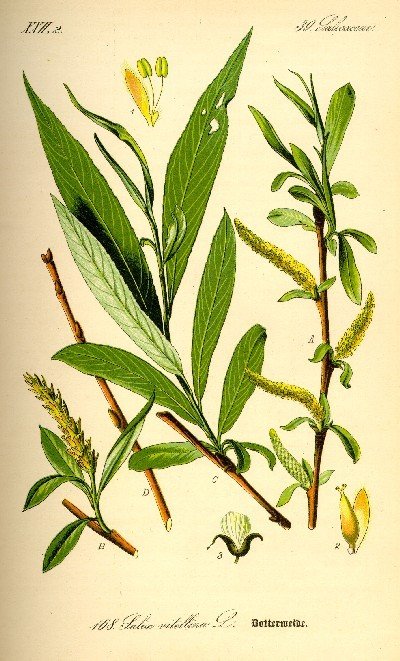The Willow
Listen to the audioguide
Salix
The Willow
Family: Salicaceae
The Willow
Family: Salicaceae
Salices humilesque
genestae
aut illae pecori frondem aut pastoribus umbram
sufficiunt saepemque satis et pabula melli.
Willows and humble broom
provide grazing for the sheep, shade for the shepherd,
a hedge for the crops, pastures for the bees.
Georgics II, 434-436aut illae pecori frondem aut pastoribus umbram
sufficiunt saepemque satis et pabula melli.
Willows and humble broom
provide grazing for the sheep, shade for the shepherd,
a hedge for the crops, pastures for the bees.
In this passage from the
second book of Georgics Virgil talks about the willow. In the past this plant’s
leaves were use to feed the livestock, whereas its flowers were useful for the
bees’s diet. The willow is still an essential part in order to make honey,
because it blooms quickly and so it gives a lot of nectar and pollen to the bees when the flowering is low.
The bees work actively on the willow’s flowers all day. Virgil writes about the
willow’s flowers as bee’s diet in the
Bucolics too:
Hyblaeis apibus florem
depasta salicti
That feasts with willow flower the hybla bees
Bucolics I, 54That feasts with willow flower the hybla bees
And then Virgil writes in the Georgics:
Viminibus salices fecundae
The willow’s rich in osiers
Georgics II, 446
The willow’s rich in osiers
Georgics II, 446
In the days of Virgil the willow’s branches, which were flexible and strong, were already used to make twine works and sold with the name of osier.





